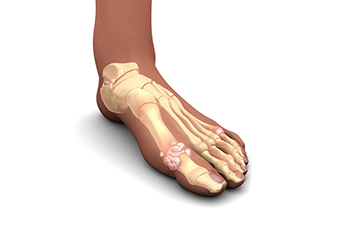
Gout, a form of inflammatory arthritis, requires a meticulous diagnostic approach to pinpoint its presence and pave the way for effective management. The diagnosis typically begins with a detailed medical history and examination, where the chiropodist assesses symptoms such as sudden and intense joint pain, swelling, and redness. Laboratory tests play a vital role, with a blood test measuring elevated levels of uric acid, which is a key indicator of gout. In some cases, a synovial fluid analysis may be conducted by extracting fluid from the affected joint to check for urate crystals. Imaging studies such as X-rays or ultrasound may be employed to examine joint damage and monitor the progression of the disease. The comprehensive diagnostic process allows chiropodists to differentiate gout from other conditions with similar symptoms and tailor an appropriate treatment plan. If you have developed gout, it is strongly suggested that you are under the care of a chiropodist who can accurately diagnose and help you to manage this condition.
Gout is a painful form of arthritis that can affect anyone. Please consult with Chiropodist Stephanie Poupore from North Bay Foot & Ankle. Our clinician will assess your condition and provide you with quality foot and ankle treatment.
What Is Gout?
Gout is characterized by sudden, severe attacks of pain, redness, and tenderness in the joints. This type of arthritis is caused by a buildup of uric acid in the bloodstream. When uric acid crystallizes in a joint, often the joint of the big toe, it can bring about a gout attack.
Symptoms
Symptoms of gout include:
Sudden and severe pain
Swelling
Redness
Warmth
Joint stiffness
Joint deformity
Diagnosis
A chiropodist will ask questions about your personal and family medical history, followed by an examination of the affected joint. Laboratory tests and x-rays are sometimes ordered to determine if the inflammation is caused by something other than gout. A sample of fluid taken from your joint can show whether it contains uric acid.
Treatment
Prescription medications or injections are used to treat the pain, swelling, and inflammation. Patients with chronic gout can also use behavioral modifications such as diet, exercise, and decreased intake of alcohol to help minimize the frequency of gout attacks. Foods and beverages that are high in purines should be avoided since purines are converted in the body to uric acid. If left untreated, this painful condition can leave your joint permanently damaged and swollen.
If you have any questions, please feel free to contact our office located in . We offer the newest diagnostic and treatment technologies for all your foot care needs.
